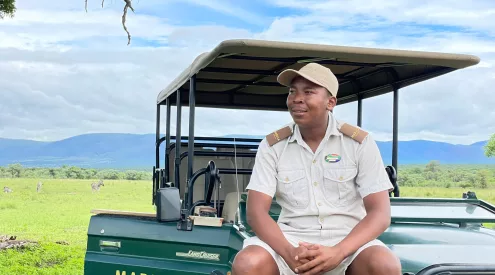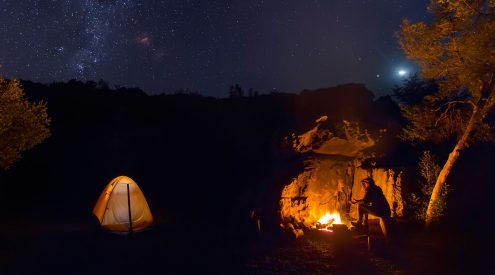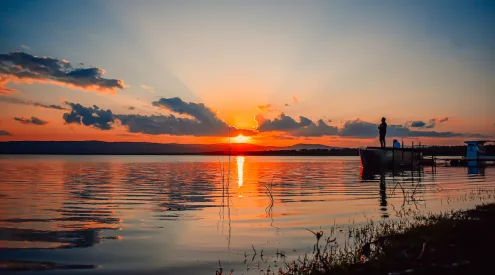With such amazing big cat sightings on our previous safari to Ndutu, we had high hopes for the return on our journey back ‘South.’ Literally, as we arrived at the first tree since leaving the Serengeti, what should we find, but three lions. Two young males and what we assumed was their mother. She was hiding in a bush making what can only be described as a half-hearted stalking attempt on some wildebeest in the near distance on the open grassland.

These lions greeted our return to Ndutu
We pushed on to our overnight stop at Ndutu Safari Lodge, which is looking a bit faded at this point, especially in comparison to how safari lodges are built these days, but it was comfortable and the trees outside our room were filled with Fisher’s Lovebirds and a Grey Woodpecker.

Fisher's Lovebirds
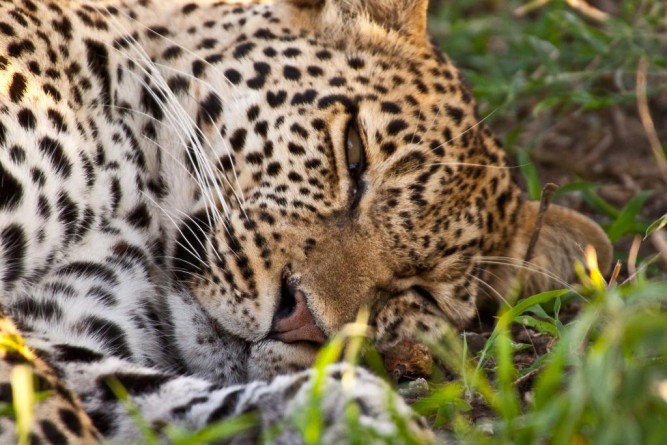
A female leopard snoozes in the shade of a tree
On our drive out, we came across a very cute young fox, fast asleep in the grass, his ears shamelessly huge, but not seeming to interfere with his nap. But the highlight of our day was a female leopard (finally!). She was magnificent, pacing around until she found a comfortable spot below a tree to rest and doze. One by one, the other vehicles at the sighting headed off leaving just us and the leopard. Then, not far away, we spotted an animal very stealthily creeping through the grass. First he moved away from us and then made his way in an arc around us. It was a male leopard – significantly larger and more muscular than the slender cat in front of us. The female spotted the big fella, although seemed non-plussed at first – rolling on her back and having a bit more of a snooze.
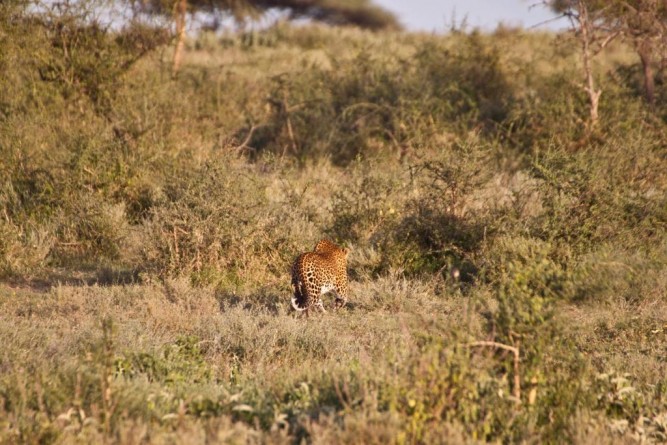
A male leopard slinks into the undergrowth
Eventually, she sat up and turned to watch. As he circled she followed his movement, shifting her position to be able to see. As the golden moment of light arrived our female rose, climbed a tree and looked out to follow the path of her man. A more spectacular and archetypal leopard pose there could not be. She was magnificent. She kept a close eye on the male, who by this point had made around a 200 degree circle of her. Eventually, his allure was too great. She climbed down, and silently headed off into the sunset with her man. Just wonderful.
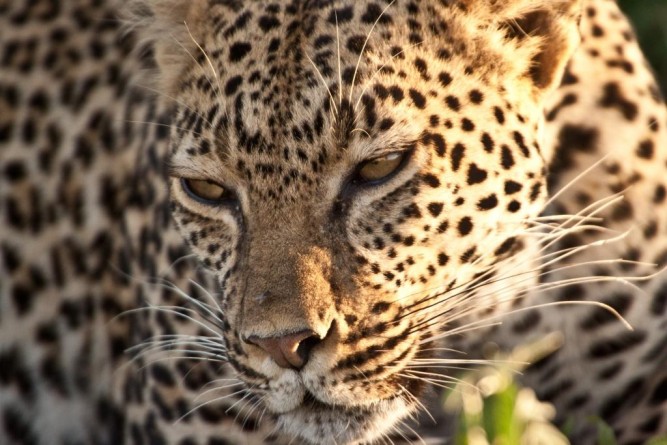
Surely one of the most beautiful of the big cats

An archetypal view of a leopard as she watches a male in the near distance
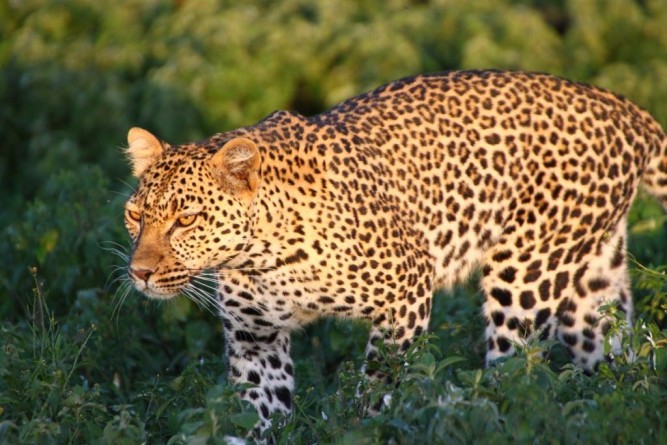
This female leopard slinks off to join her mate
Back at the lodge, we had dinner under a small family of genet cats that sat in the rafters. Stunning creatures with such delicate features.

Our final morning at Ndutu brought yet more big cat sightings. Not far from camp, we came across a lone cheetah. Within moments of our arrival he began to stalk a small herd of gazelle not far from his position. It was never going to be easy as the short grass and bushes between he and them was going to give him little cover. However, it was the three hyena arriving at the brow of the hill that abruptly ended his hunt and as soon as he (and the gazelle) saw them the game was up. He sat in full view of the gazelle for a while. They slowly moved off and he curled up for a sleep.
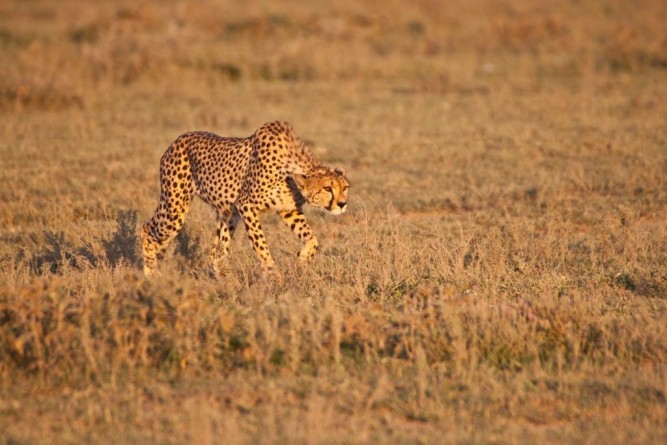
Stalking gazelle

A cheetah gives up the hunt
Not far away, however, was several of a species that have enchanted us over our time in Tanzania. Curled up were a group of younger bat-eared foxes, enjoying the sun whilst a few larger foxes, presumably their parents, snuffled around nearby. A group of banded mongooses moved through in close proximity but the two species paid each other little attention.

Fox cubs gather together whilst their parents forage nearby
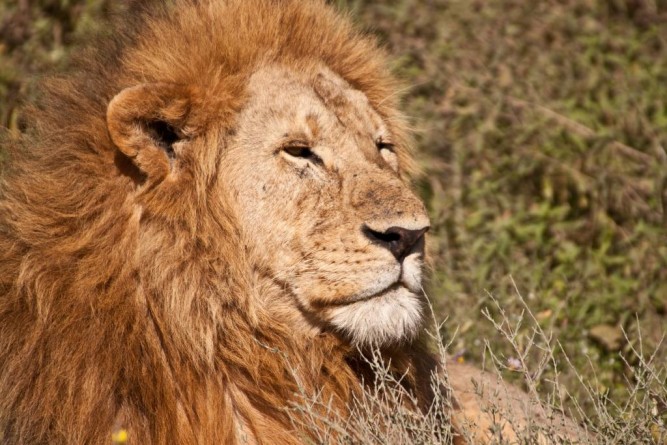
A large male lion moments before collapsing into a deep sleep
Along the river three lions rested in the shade of a tree, and further still a large male lion rested alongside his lady. She did not look up at any point, and he succumbed to the weight of his head very quickly, soon laying down in the grass and going to sleep. We returned to the lodge for breakfast and pack up ready to head out of the area one last time. Strangely, the lodge only serves breakfast between 7 and 9 in the morning. Given the time you most want to be out on a game drive is between 6 and 9 this idea is frankly baffling. Apparently, most guides do not let their guests go on game drives until after breakfast – thereby missing all the best sightings, and the best light in which to take photographs. In fact, throughout our stay in Tanzania, whilst we used the middle of the day to move from one area to another, the number of game drive vehicles we saw out and about at this time was staggering. Why on earth you would pay all that money to try and watch animals in the worst light, at the hottest time and when the animals are least active, is very strange indeed. As we were packing we had one last chance to catch the lovebirds in action. After a few moments of one sidling up to the other they engaged in the kiss, the act for which lovebirds are renowned.
We drove south, around the rim of the Ngorongoro crater, and through cloud and drizzle to arrive at Lake Manyara. Blue monkeys jumped around the trees at the entrance, the start of a dense multi-layered forest, so remarkably different to the rest of the landscapes we had encountered. Abruptly the forest opened on to a small grassy plain with a few wildebeest, zebra, warthogs and birds feeding on it. The hippo pool marked on the map was a strange place. Past a fence, and through some trees you got a poor sighting of a blob you had to assume was a hippo. The experience at this stage was more of a zoo than wildlife area, and we pushed on south hoping for a more natural wildlife experience. To our right as we drove were large hills running the length of the lake that lay to our left. When I say lake I mean vast, never-ending dry flats, the heat haze giving the impression of water, but an impression was all there was.
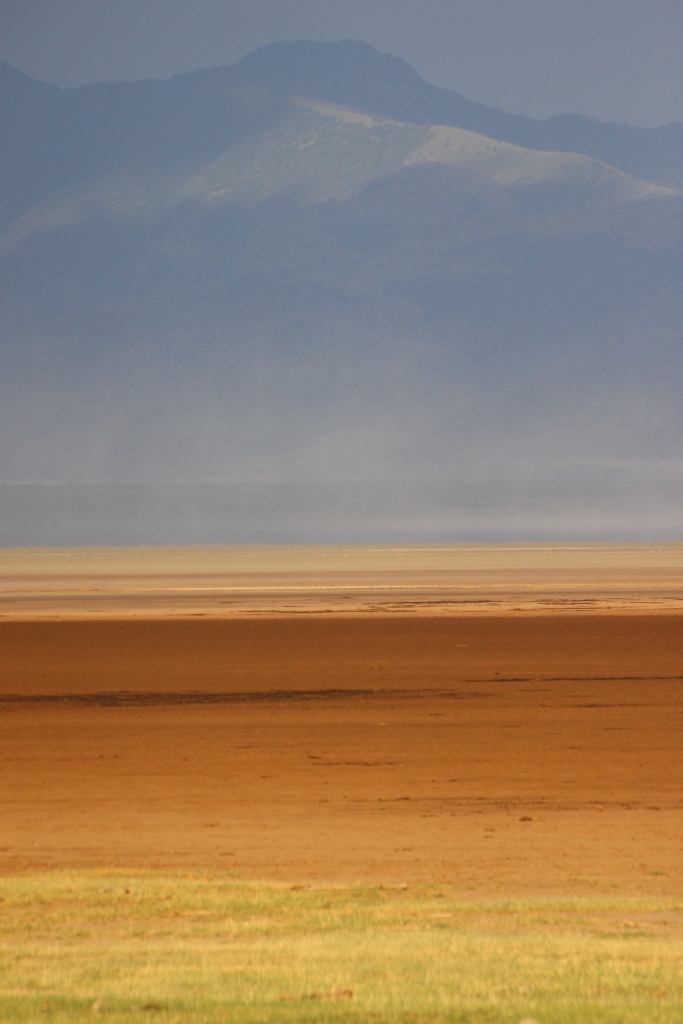
This is Lake Manyara, but where is the lake?
We saw, well, frankly,only a handful of animals. That night we had a visitor to camp when a small-spotted genet emerged from the undergrowth to investigate these humans and their cooking smells in his/her home. The following morning we continued South to where the map said there were hot springs. There, we found strange algae growing, but we also found the remnant of the lake, and in it, a large flock of flamingo. A fish-eagle swooped in causing the flock to take off en masse – flying around before settling back on the lake not far from where they started, whilst the eagle landed on a nearby tree and surveyed the view.

Flamingoes feed in the ever decreasing waters of Lake Manyara
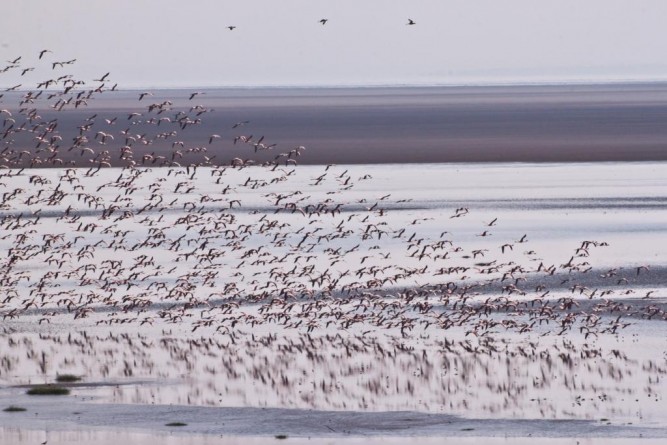
A soaring fish eagle prompts the flamingoes to flight
We packed up camp and returned to Arusha for one final night. Half a night anyway as we rose at 3.45am to get to the airport for a flight to Nairobi, a two hour wait, a flight to Johannesburg, a night in an airport hotel and a flight back to Livingstone the following day. It could have been worse, two of my companions were on the 2am Turkish Airlines flight. And so my visit to Tanzania was at an end. I have had some of the best wildlife experiences I have ever had. To visit at this time of year, when the savannah is so full of new life, was amazing. I hope you have enjoyed my tale and photos.
Looking for a place to stay in Lake Manyara National Park? Check out Getaway Accomodation.
Related: On Safani in Tanzania : Ngorongoro Crater









